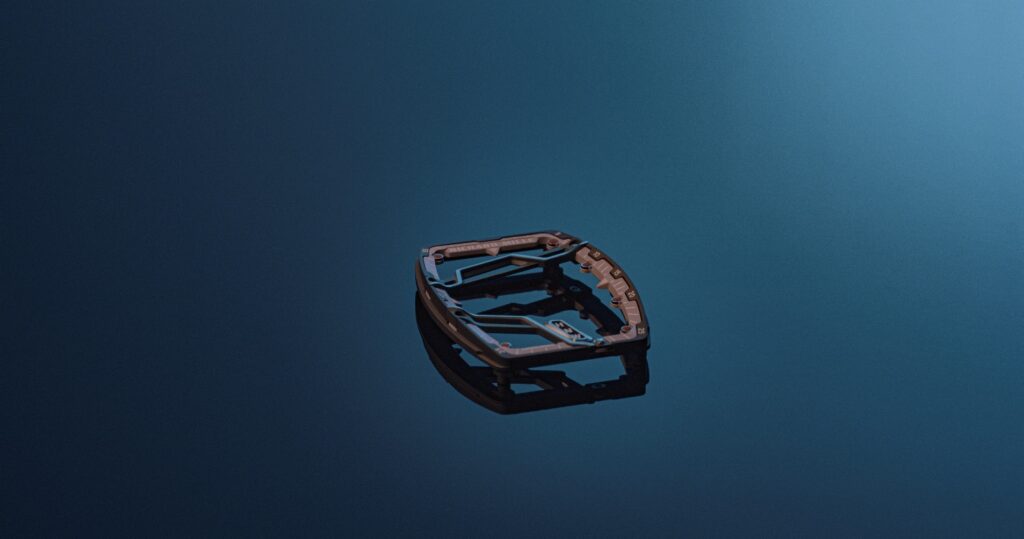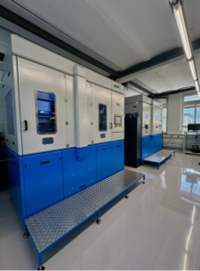New CLA, compensation, training and the attractiveness of the sector, … An exclusive interview with Ludovic Voillat, Secretary General of the Employers’ Convention of the Swiss Watch Industry
New CLA, compensation, training and the attractiveness of the sector, … An exclusive interview with Ludovic Voillat, Secretary General of the Employers’ Convention of the Swiss Watch Industry Veröffentlicht am décembre 11, 2024 The new collective agreement for the watchmaking and microtechnology industries – which took effect a few months ago and is set to run until 2029 – covers 500 companies and nearly 55,000 employees, or 85% of workers in the watchmaking sector. Could you tell us more about the main new features in this collective agreement and what the key takeaways are ? After a year of talks, the new version of our collective agreement took effect this summer. Improvements for employees include: An increase in parental leave: 3 weeks for paternity leave and 19 weeks for maternity leave. An increase in the employer contribution to health insurance premiums, which now stands at CHF 195. Significant progress was also made for employers, including a reduction in the coverage period in the event of illness following dismissal, thus enabling greater flexibility in workforce management. Philippe Bauer, CPIH President and Ludovic Voillat, CPIH general secretary when the CLA was signed Do you consider this to be a genuinely balanced compromise between ensuring social progress while enabling businesses to remain competitive? Negotiations always bring their share of frustrations, on both sides. We are fortunate to live in a country where consensus is valued and where dialogue between the social partners remains possible. Although discussions can sometimes be heated, they often result in improvements. However, it is important to recognise that we have reached a certain ceiling in terms of major social advances, such as reducing working time, for example. In addition, it is becoming critically important to ensure companies are able to remain flexible since they already have to deal with numerous legal obligations and the particularly heavy administrative burden that these obligations entail. Are there any issues that have not been resolved with the unions and that are still under discussion? Of course, some issues remain under discussion. This is perfectly normal when it comes to social dialogue. Negotiations between the social partners are an ongoing process which evolves over time and with the challenges facing the sector. However, since the talks are confidential and we wish to maintain a climate of trust with our partners, we do not usually make public statements on these points until they have been resolved. Our aim remains to achieve balanced solutions that are in the interests of both the employees and the employers. Despite the uncertain economy, you have confirmed that employers will provide their employees with full compensation for cost of living increases. Concretely, what will this mean for employees in the sector? Discussions on the cost of living allowance taking effect on 1 January 2025 took place this fall between the UNIA union and representatives of watchmaking and microtechnology companies. The companies mainly focused on the economic outlook for the coming year and the inability to predict how it will develop. Despite concerns about current and future economic challenges, the companies decided to provide full compensation for rising prices (CHF 65) as of 1 January 2025, thus showing their commitment to supporting their employees in the face of inflation and the rising cost of living. According to your information, do the watchmaking and microtechnology professions still attract as many young Swiss people? Yes, these professions continue to attract young people. However, promoting our professions remains a key issue for the industry. As in other sectors, we must redouble our efforts to promote them, because young people’s interest is increasingly directed towards areas such as commerce, health, social work and IT, to the detriment of more manual professions. Has the new Federal Certificate for Workshop Managers in the Watchmaking Sector been a success? Who is it primarily aimed at? It’s still a little early to talk about success, since this new training only began this summer in two French-speaking schools: CEFF in St-Imier and the Ifage in Geneva. A German-language session is also set to start in Granges in 2025. This federal certificate was designed at the request of companies, with content specially geared to the specific needs and characteristics of the industry. It is aimed primarily at experienced employees wishing to progress towards workshop management or coordination roles in the sector. Are there still job offers that are not being filled for certain watchmaking professions, with very rare and highly sought-after profiles? In the current economy, businesses tend to be more focused on other priorities. However, highly specialised profiles clearly still attract strong interest from employers. What are the next major challenges for the Employers’ Federation of the Swiss Watch Industry? The challenges are numerous given the many missions for which our umbrella organisation is responsible. First of all, we must continue defending the interests of the sector by guaranteeing optimal conditions, while preserving peaceful industrial relations and a constructive dialogue with our social partners. We must support our companies by offering them modern and suitable tools to help them address the many challenges they face, particularly in terms of the physical and mental health of employees. Another major challenge is to continue developing training by adapting it to the changing needs of the sector in order to guarantee the excellence and competitiveness of our sector. Finally, we must make our professions more attractive to young people by modernising their image and promoting the opportunities they offer. Interview by Stephan Post, Dynamics Group News 25 avril 2025 Emissa dévoile le Precimill, un centre d'usinage compact et performant 20 mars 2025 WatchDec, la haute précision au service du MedTech 20 mars 2025 PRECITRAME – Une micromachine flexible pour les petites séries de pièces miniatures 20 mars 2025 Un pôle MedTech en pleine expansion au cœur du salon EPHJ Show all the news Share this article Facebook Twitter Youtube










